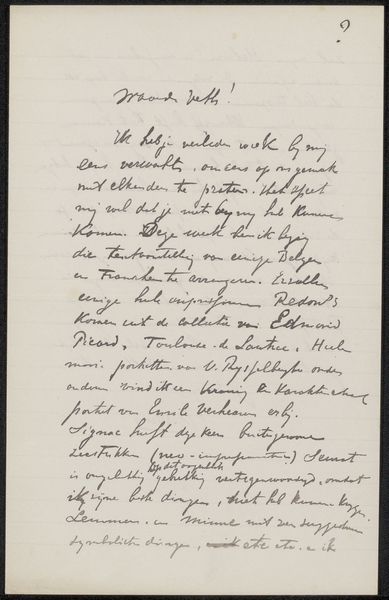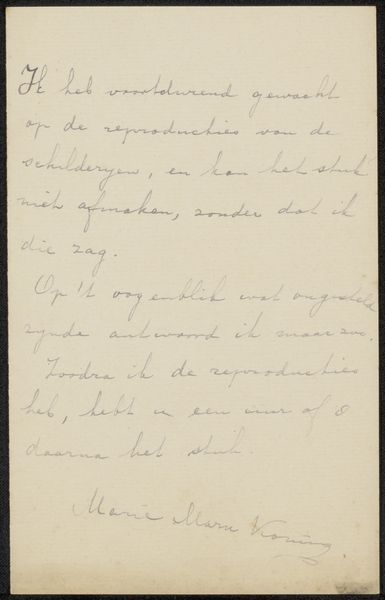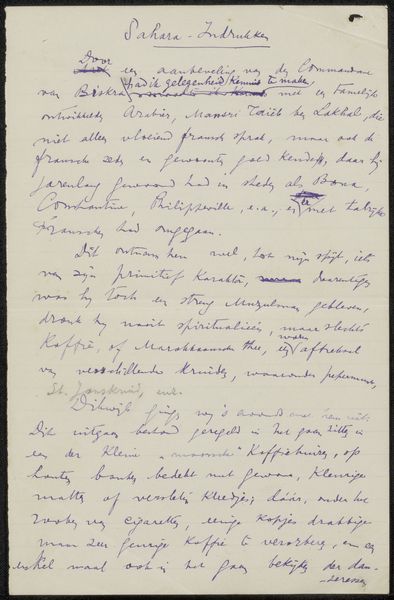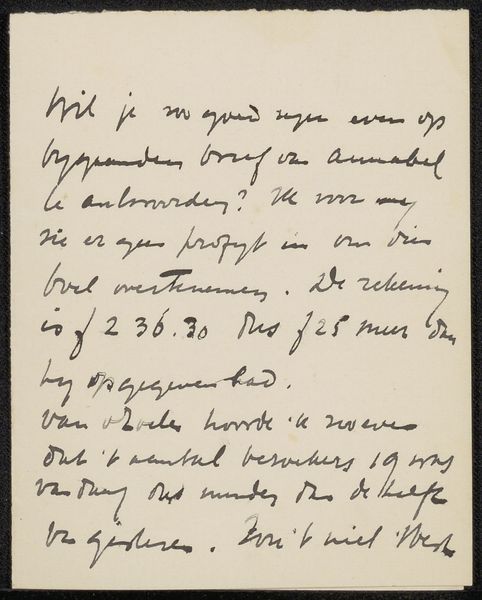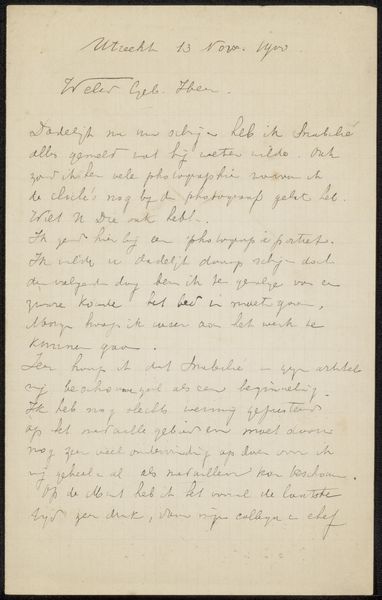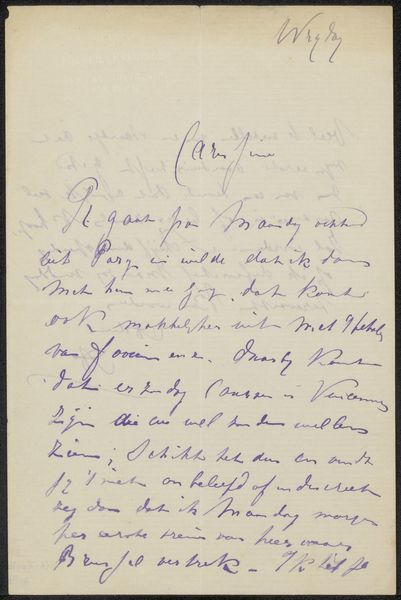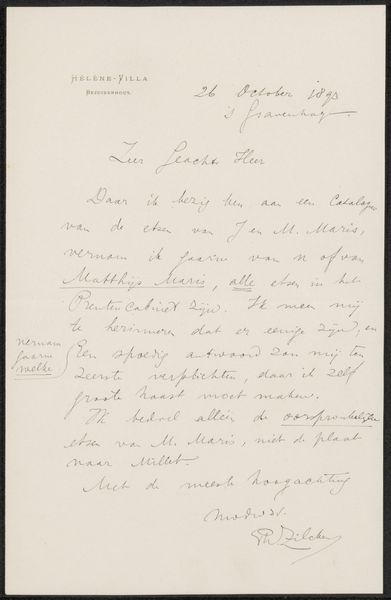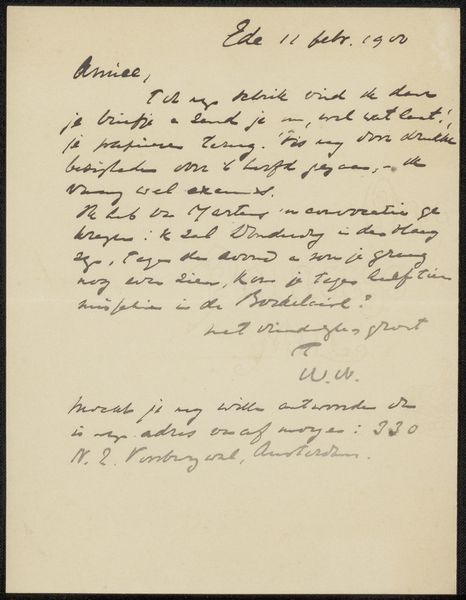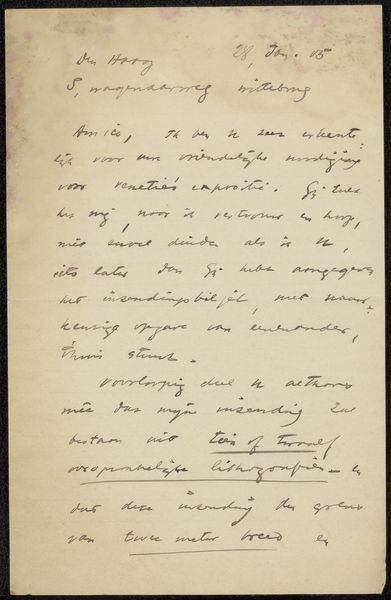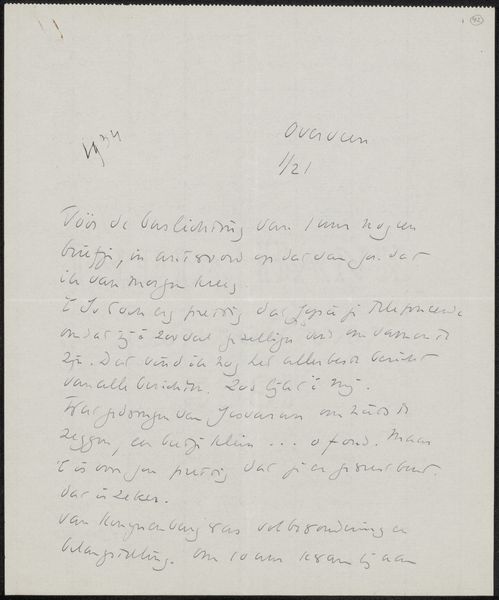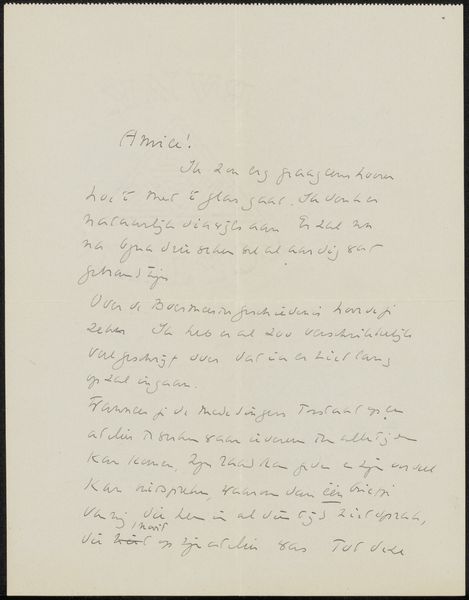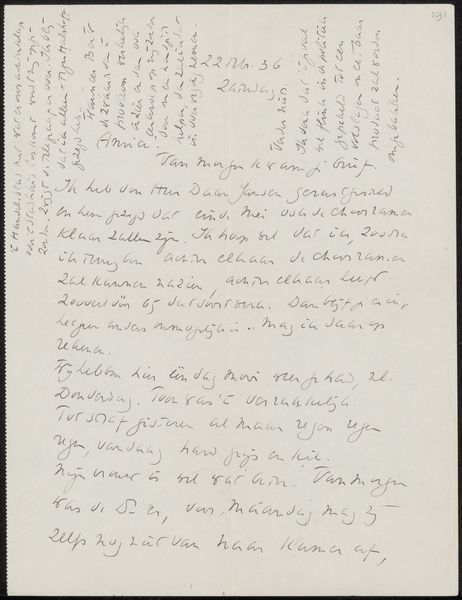
drawing, mixed-media, paper, ink
#
drawing
#
mixed-media
#
paper
#
ink
#
abstraction
#
modernism
Copyright: Rijks Museum: Open Domain
Curator: This work, titled "Aantekening," roughly translated to "Note," is attributed to Philip Zilcken and dates between 1867 and 1930. It's a mixed-media piece, primarily ink on paper, and currently held here at the Rijksmuseum. Editor: My first impression is one of quiet intensity. The subtle tones of the ink and paper create a somber mood, while the handwriting itself seems hurried, frantic almost. Curator: Exactly. Handwriting is always imbued with the personal; its legibility dictates our immediate reading. But what do we, who likely don’t read this language fluently, truly receive? Are we then just as much beholding a type of mark making and image? Do we impose meaning beyond recognition, and how does this relate to identity formation, especially considering Zilcken's potential status and the historical backdrop of burgeoning modernism? Editor: That's interesting. I'm struck by the physical process – the ink bleeding into the paper, the pressure applied by Zilcken’s hand. The choice of materials—paper and ink, easily accessible yet also historically loaded—speaks to the very act of inscription, a foundational human endeavor. The abstraction invites reflection upon those modes of artmaking available. I can't help but wonder what the availability of these media dictated about Zilcken’s artistic capabilities? Curator: Precisely, it's a window into Zilcken’s thought process, his engagement with language, and even his social milieu. Consider the politics embedded in mark making, of writing as assertion, both the freedom and constraint inherent in wielding these materials in late 19th-early 20th century Europe. The work can serve to disrupt and even destabilize how we perceive societal authority. Editor: I see your point. We often overlook the labor inherent in textual creation, particularly handwritten works like this. The imperfection, the fluidity – these speak volumes about the lived experience. Curator: Absolutely, it allows us to explore power structures and deconstruct the myths around authorship and artistry in a time when ideas about the modern were forming. Editor: A compelling consideration of process that reveals the social underpinnings of even a seemingly simple note. Curator: A rich example of an aesthetic document from the fin de siecle.
Comments
No comments
Be the first to comment and join the conversation on the ultimate creative platform.
